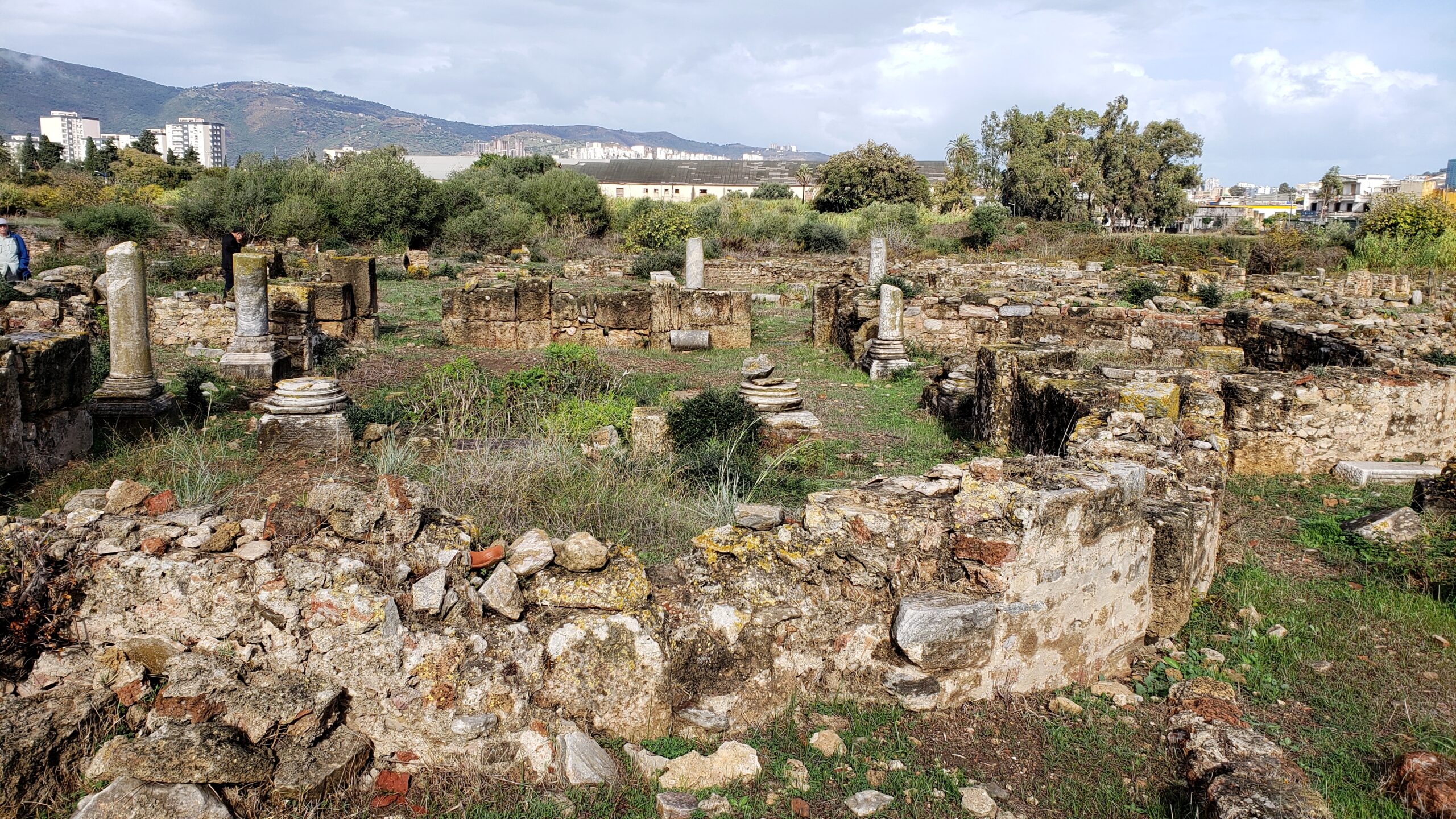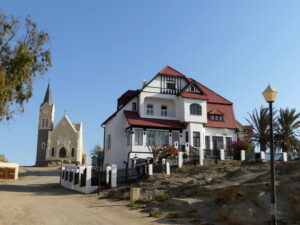We made a special trip to Annaba on the northeast Algerian coast for one reason, to walk the old pathways of Hippo Regius, the home city of Saint Augustine (354 to 430 AD). (To read about our visit to two other coastal cities, Oran and Bejaia, click here.)
One of the key philosophers of Catholicism, Augustine was an African, a Berber/Numidian by heritage. His geographical travels brought him to Carthage (Tunis) for school and Italy for religious training. His spiritual journey took him from a lustful married man with a mistress to a profound religious philosopher. In his mid-30s, after returning to Africa, he became bishop of Hippo Regius for nearly 40 years, dedicating himself to preaching and writing. He tells his own story of human failings and redemption in his remarkable book, Confessions, while also brilliantly expounding his philosophy of fundamental issues like the nature of time. As he was dying, Vandal armies spared the city, but returned afterwards to raze it, except – it is said – for his cathedral and library. Time has done the rest.
Hippo Regius, the home of Saint Augustine.
The ruins in this frame comprise only about a third of the excavated site, in all about 500 meters (1700 feet) square. The most important section, to us, is marked by two semi-circular stone walls (about a third in from the right edge and in the middle vertically). The left of the two was an apse for Augustine’s church-like house.
The tall columns at the end of the street mark the meeting place of the Forum. High above the site floats the late 19th century Basilica of St Augustine. In Augustine’s day, the town sat at the coastline but the sea has receded since then.
View of Augustine’s home from beyond the semi-circular apse. Inside this space we felt most connected to him as we touched the same stones he had.
Another extensive portion of the Hippo Regius site shows the outline of the large old basilica, where the bits of columns stand. Here, at the semi-circular apse toward the back, Bishop Augustine would have led services and preached.
This animated mosaic came from a villa built while Augustine lived in Hippo Regius. It vividly depicts a hunt for animals like deer to feed the predators held in a pen by a wall of shields. The large cats would be used in gladiatorial games at a venue like the walled one on the right. The wildlife shown here were common in Augustine’s time.
This marble head of Vespasian from the 1st century at the Hippo museum portrays him as a kinder, gentler emperor – whatever the truth might have been. He seems to have been a reformer and a builder of Rome’s Colosseum among other things. But he rose to fame as the military leader who quelled rebellion in Jerusalem. The head of Theodosius, the last emperor of the unified Roman Empire, would have replaced Vespasian’s on statues here when Augustine moved to Hippo.
No, this is not a selfie of Barry’s reaction upon reaching Hippo Regius, but rather it’s the Mask of a Gorgon. At many intersections, likely crossed by Augustine himself, fountains delivered water through marble busts like this, with customary half-shut eyes and serpentine wind-blown hair. At one meter high (over 3 feet) and at 320kg (700 pounds), it was no push-over for the Vandals. It was found intact as late as 1930.
We were lucky in our timing to see the charming interior of the late 19th century Basilica honoring St. Augustine, the one atop the hill overlooking the Saint’s old town. It was closed to host the Swedish ambassador just before we arrived. The church is an apt blend of Roman, Byzantine, and Arabic styles. The attendant was pleased to show us around and discuss the current display about the Bible and other holy books.
Annaba today
We came here for Augustine’s Hippo, but found modern Annaba a delightful seaside town as well.
Along the coast, for quite a distance north of the center of Annaba, we could find lovely bays and seaside communities like this. At the peninsular end of the road, in blustery wet weather, we also admired a rugged splinter of rock delicately supporting the lighthouse.
You might think you were in Paris, with these French colonial buildings lining a leafy boulevard. Our hotel was within a similar building. Its narrow wrought-iron balcony let us peer out at the busy street despite the rains. The very commercial harbor lies in the mists at the far end.
Numerous cafes and gelato shops (such as L’Ours Polaire, or The Polar Bear) nestle under the broad trees of that very French main boulevard, with plenty of seating for local families in the evening.
(To enlarge any picture above, click on it. Also, for more pictures from Algeria, CLICK HERE to view the slideshow at the end of the itinerary page.)















